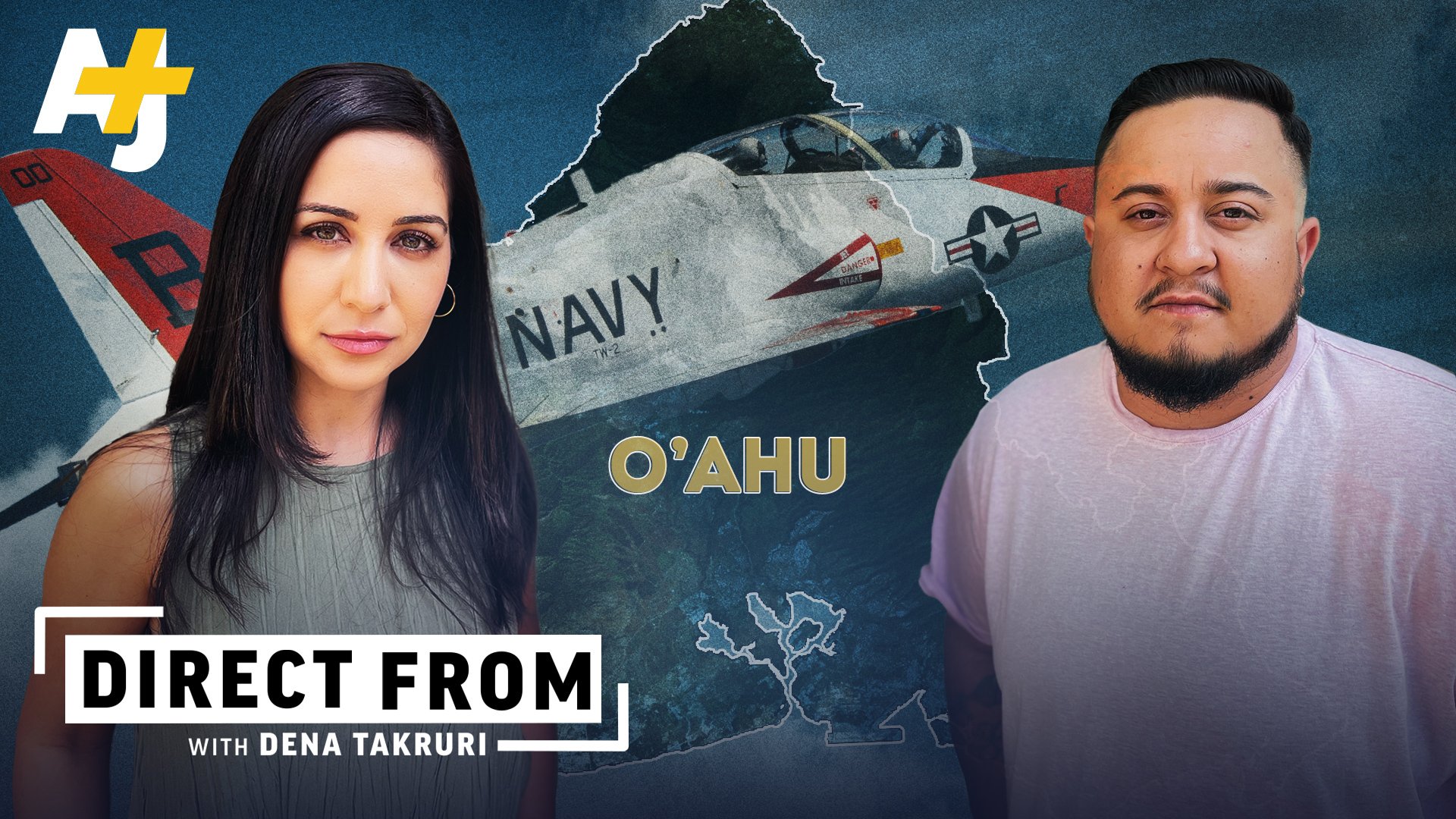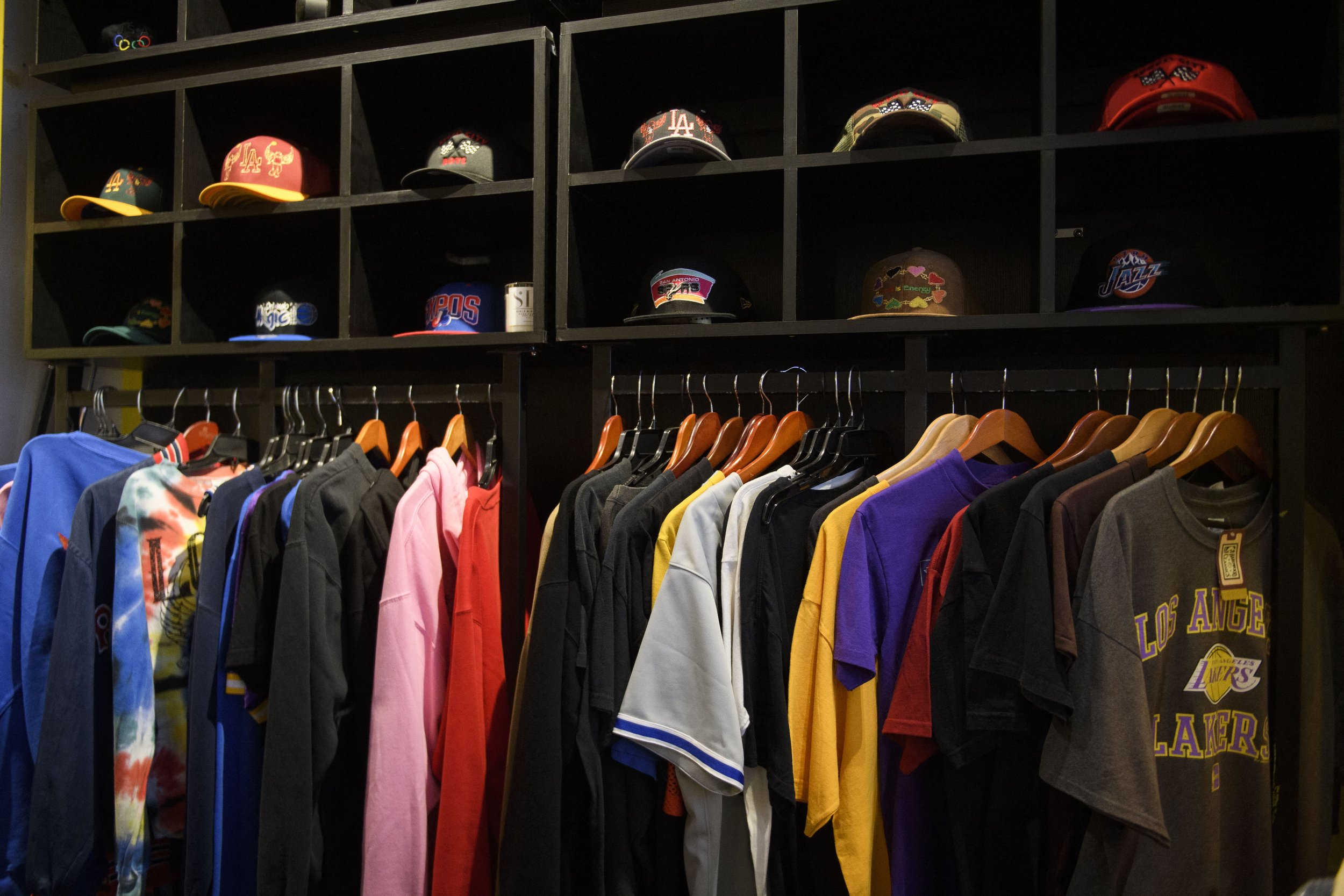“The Navy Hasn’t Taken Responsibility for Poisoning My Family”
Aedyn-Rhys King and AJ+ presenter Dena Takruri.
The U.S. Navy has been poisoning people on O‘ahu, Hawai‘i’s most-populated island. Late last year, 19,000 gallons of jet fuel leaked out of the Navy’s underground tanks and into the island’s main aquifer, poisoning drinking water. The leak has displaced thousands from their homes, and some have reported health problems after coming into contact with the fuel.
In January, members of Congress lambasted the Navy for failing to take proper responsibility for the crisis. The Navy has since implemented a program of flushing buildings’ water systems with clean water and adding filtration units, and has set up a website to track contamination and water treatment. Still, the Navy’s handling of the crisis has struck many residents as slow, evasive and incomplete.
In an interview with AJ+ senior presenter Dena Takruri and senior producer Kate Elston, Army veteran Aedyn-Rhys King said that the Navy was reluctant to admit that his house was hooked up to its water system – even after King’s fiancee and nephew fell ill. Unable to use their water or afford to move nearby, King and his fiancee made the difficult decision to leave O‘ahu. They’re now moving to Nevada.
Following the Navy’s program of flushing homes, a Navy spokesperson told Takruri that he believed that families could now cook safely if appliances were washed properly. Today, the Navy says that the water is safe to drink again in residential areas affected by the leak.
For the video “How The Navy Poisoned Hawaii Families With Jet Fuel,” Takruri asked King about the Navy’s failure to take responsibility for the fuel leak, and the various ways the leak has upended lives.
This interview has been edited for length and clarity.
When did you start to realize something was off?
We live in civilian housing, but it’s old Navy housing. On December 1 [2021], the property managers reassured residents that we are not on the Navy water line system, so our water would be safe and unaffected [by the water crisis]. The next day, my nephew took a shower before work. By the time he got there, they were calling the ambulance because his whole body had swollen up.
On December 3, my fiancee showered before work, and also went to the emergency room that day. That's when we started to put two and two together.
Meanwhile, the Navy and Kapilina [apartment] management kept saying that we weren’t on their water line system. That finally changed on December 8.
Tell me a little bit more about your family’s symptoms and the toll it took on all of you.
My nephew Jayden’s whole body was swollen. His eyes were swollen shut. His throat started closing up. Rash all over his body. The paramedics had to give him two EpiPens just to get him to the emergency room. My fiancee, Mandy, she felt like her skin was on fire; she was nauseous, vomiting, dizzy. On December 5, I had to rush her to the emergency room again because she also had chest pain and trouble breathing. In the month of December, I think she went to the emergency room four or five times.
In the emergency room, they didn’t take us seriously. I tried to tell the doctors that there is potential jet fuel leak exposure in our neighborhood, and they told us that they hadn’t heard about our community having that issue. It's like, I don't care if the news isn't reporting on it yet, this is what's going on.
It was really scary, because my fiancee is diabetic and she falls in a high-risk category. I'm worried about the long-term effects for her and for our 2-year-old son, because there aren’t any studies or reports about potential long-term effects.
Even though we're not using the water right now, we are still flushing the toilets and the fumes could be coming up through the drains. When we kept the house closed and had central AC running, we noticed that we were feeling drained and sluggish, and we had headaches, brain fog and dizziness. Our son, who is normally a ball of energy, would sleep in longer. When we found out about the fumes, we started to air out the house or stay away from it. When we did that, the headaches were gone. We had our energy, our son ran around and played. But we don’t keep the windows open at night.
I'm pretty stressed out about this, and not just for my family, but for all the families in our community that have been affected. That’s why I have been so vocal.
Has the Navy taken responsibility for this?
No. I do believe that this problem is more widespread and has been going on longer than the Navy is letting on. I'm not surprised that they’re not being upfront about it – that's how the military works.
Are you using the water in your home?
We're not using it at all. It's been pretty inconvenient. Before we set up an alternate system, I was bringing my son and fiancee to a family member's home in Mililani every night, which is about a 30-minute drive there and back. We were washing our clothes at family or friends’ homes, washing dishes with bottled water, washing our hands with bottled water.
Has the Navy done anything to try to fix the situation in your home?
Yeah, they basically just ran the water and drained the water heater. On the front of our home there is a fuel stain that has been there since the flush. At first I thought it was just water that hadn't dried, but after a few hours it was still there. I reported it to the Navy and Kapilina management, but nothing happened. We haven't used the water since then because we don't trust it.
And from what we understand, other communities have been flushed and their water is still affected.
Are you going to stay here?
No, we're not. It's not safe here anymore. The rent here was already ridiculous, but we were able to afford it by living with another family. They've also decided to leave, so unfortunately we can't afford a rental in Hawaiʻi on our own.
It was definitely a hard decision for me to make because I'm from here. I grew up in North Dakota, but I was born here. My heart has always been in Hawaiʻi. A lot of my family still lives on this island.
Watch Takruri and Elston’s video “How The Navy Poisoned Hawaii Families With Jet Fuel” on YouTube.




